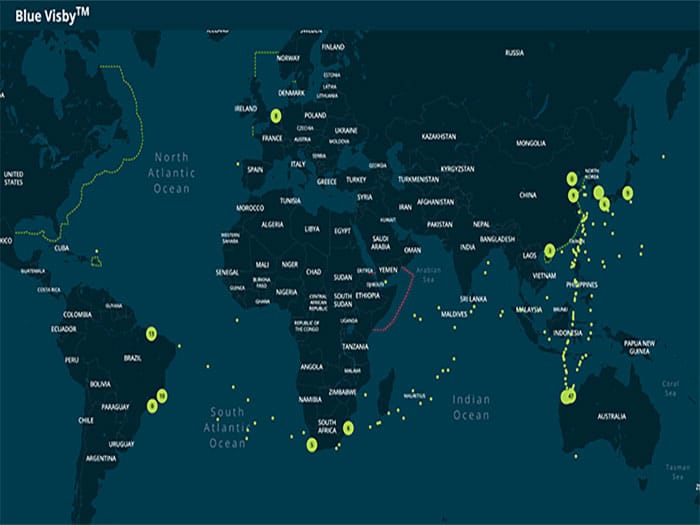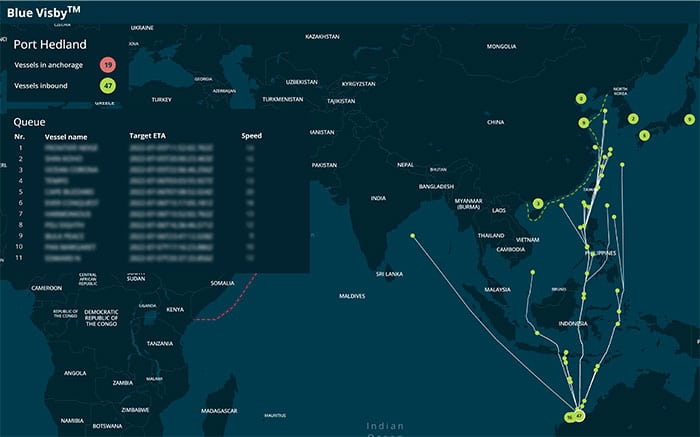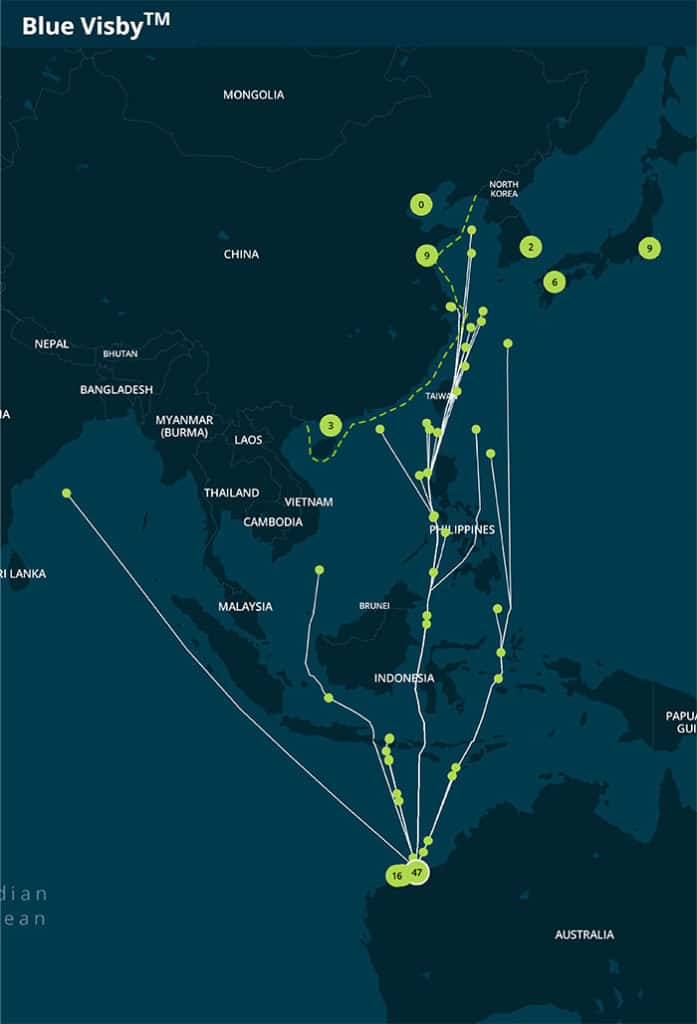
Tackling the problem of “sail fast, then wait”
Written by Nick Blenkey
Global view listing the number of inbound ships to world ports (credit: Blue Visby Solution)
Ever since the age of sail, cargo ships have followed the same operational practice: “sail fast, then wait” (SFTW). Ships sail to their destination at their service speed, without regard for the local conditions, and then wait at the anchorage until a berth becomes available.That didn’t have much of an environmental impact back in the days of sale, but now eliminating the practice could reduce shipping emissions by around 15%
Helsinki, Finland, headquartered maritime software specialist NAPA has become one of the founding and coordinating members of the Blue Visby Consortium, which is tackling the problem through a solution that combines an innovative contractual framework and state-of-the-art digital technology.
The Blue Visby Solution optimizes arrivals, enabling vessels to reduce their speed – and emissions – without impacting their commercial performance.
If applied globally, the solution has the potential to reduce the carbon footprint of the global shipping fleet by more than 60 million tonnes of CO2 per year – which is larger than the total emissions of an entire country like Norway.
NAPA joins the Blue Visby Consortium as a technology provider, contributing its digital and voyage expertise to help optimize and stagger arrival times for groups of vessels traveling to the same port. Taking into consideration parameters such as the performance and characteristics of each vessel, port congestion at destination, and weather conditions, the Blue Visby algorithm provides an optimal target arrival time for each vessel, while keeping their order of arrival as if they had sailed independently without the solution. This enables vessels to slow down, cutting their fuel consumption and emissions, but still “keep their place in the queue” and arrive one after the other, which reduces unnecessary waiting times outside ports.
Crucially, the Blue Visby Solution includes an innovative contractual framework to address the problem of so-called “split incentives.” It introduces a sharing mechanism that enables stakeholders on each voyage (shipowners, charterers and cargo interests) to share the costs and benefits of the implementation of the Blue Visby Solution, including fuel savings, the costs of a lengthier journey, and the financial value of emissions reductions where applicable.
This contractual architecture is designed to be compatible with the standard terms of maritime contracts and does not require any new legislation or regulations.
Based on extensive analysis of 2019 shipping data from 150,000 voyages by 13,000 cargo ships in the 150 most visited ports, NAPA estimates that the Blue Visby Solution will enable vessels to reduce their speed by about 1 knot on average, which is well within the operational parameters of the existing commercial fleet. Speed could be reduced on 87% of the voyages, leading to shorter idle times and an average emissions savings potential of 16%.
According to Pekka Pakkanen, Executive Vice President at NAPA Shipping Solutions, the solution delivers most of the benefits of “just-in-time” arrivals, without most of the problems.
“Blue Visby complements voyage planning and weather routing software by providing a target arrival time, and enables users to optimize routes and speed to save fuel without worrying about losing a competitive advantage,” says Pakkanen. “And the best part of it is that all this can be done now and with very small upfront investment, as Blue Visby requires no additional on-board systems.”

The Blue Visby Consoritum is coordinated jointly by NAPA and maritime law experts from the international law firm Stephenson Harwood LLP.
Haris Zografakis, partner at Stephenson Harwood LLP, said: “It has been fantastic to work with NAPA on this project. Not only are their systems and software best-in-class, but also their people combine deep maritime knowledge, a vision for the future of the industry, and the dedication to build that future. And in a time-honored Finnish fashion, they do so calmly, quietly, methodically and with supreme professionalism”.
The Blue Visby Consortium presently includes 11 other maritime leaders from the shipping industry, government, classification societies, consultancies, financing, and environmental organizations: Anglo-American, Carbon Trust, ClassNK, CMB, Drewry, Ocean Conservancy, Lloyd’s, the UK Hydrographic Office, the University of Manchester, Tankers International, and Vertis.





